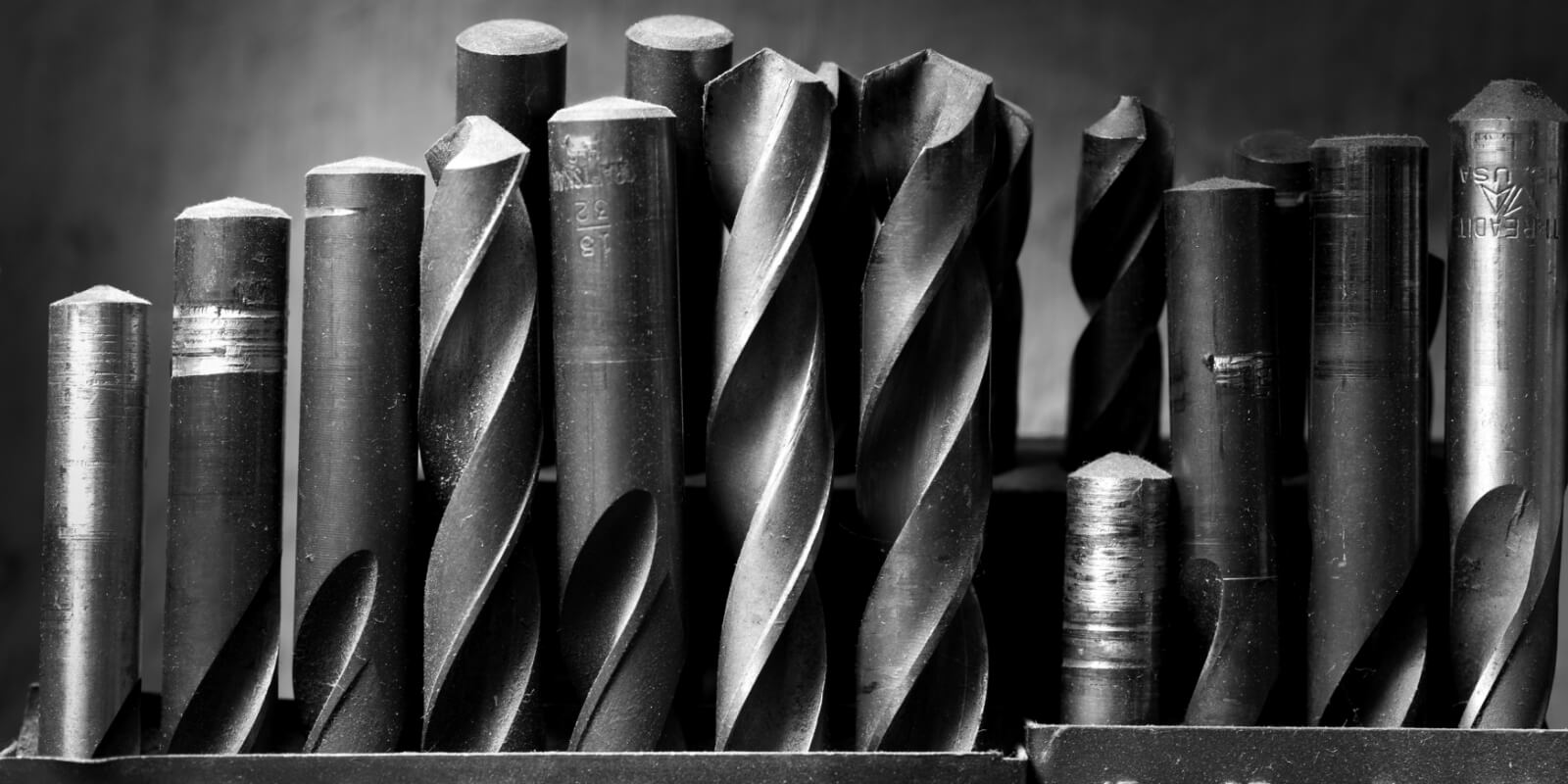A Guide to Router Bits: Sizes, Types, and Materials

A CNC router can provide your shop or project with much-needed precision and efficiency but to make the most of these benefits, you have to make sure you’re using the right router bit to get the job done.
The term router bit refers to the object that creates the cuts, joints, grooves, and profiles within your workpiece and there are many different options to choose from. For that reason, its smart to invest in a router bit set or two to ensure you have a versatile variety at your disposal. Investing in bit sets also helps keep your router bits organized so you can always find the one you need at a moments notice.
Here is a closer look at the varying options of router bits based on purpose, size, type, and material to help you make the right selection for your next project.
The Varying Purposes of Router Bits
Generally speaking, router bits can be broken up into two primary groups as far as their purpose goes: drill bits and milling bits.
Drill bits drive straight into the material and don’t have any side edges, meaning they cant move laterally while boring into the material. They are best used for jobs requiring material to be removed straight down (e.g., pre-drilling holes for screws or pegs).
Milling bits also known as carving or engraving bits are designed to move across the surface of the workpiece, clearing away chips as they move in order to create 3D designs.
Router Bit Sizes
There are many options for tooling sizes which should be determined by the goals of the project and your equipment’s ratings. Two of the most popular sizes of router bits are 1/2-inch and 1/4-inch.
1/2-inch router bits provide better stability and overall performance than smaller router bits, and in most cases serve as a good starting point unless doing specialized or small-scale work.
1/4-inch router bits are often more preferable for fine- or slight-edge work although in many cases, the same work can be done with a 1/2-inch router bit.
Router Bit Types
Router bits come in a wide variety of types, each with its own unique characteristics and preferred applications. Here’s a look at some of the most common types of router bits with some background for each.
Straight Bits
Straight bits are the most common type of bit and are thus typically the most useful for both novices and seasoned pros alike. Their name comes from the fact that they make cuts straight into the material to form a groove or dado (groove across the wood grain) or to hollow out an area for a mortise or inlay. Straight bits have a side and bottom cutting edge and come in a variety of diameters and lengths. They are designed with straight or spiral flutes and can be used for both functional and decorative cuts.
Rabbeting Bits
Rabbeting bits are used to create rabbets and lap joints and are great if you need identical rabbets for projects like creating a picture frame from scratch.
Flush-Trim and Pattern Bits
These are used to trim the edge of one material flush with the edge of another (e.g., trimming a veneered surface flush with a substrate or using a pattern to create multiple identical pieces). They are also used to cut out pattern templates and are usually guided by a pilot bearing the same diameter as the cutter.
Ogee Bits
Ogee bits are typically used to create details on furniture, shelving, or wall molding, with Roman ogee bits serving as a commonly used variation.
Round-Over Bits
Round-over bits are typically used to create decorative edges and designer profiles on furniture and are especially useful for interlocking joints.
Chamfer Bits
These are most commonly used to make beveled edges in the workpiece.
Specialty Bits
There are also a number of specialty bits that serve very specific purposes in the shop, including cabinet door bits, fiberglass bits, finger joint bits, keyhole bits, MDF bits, and more.
Router Bit Materials
There are mainly three different types of router bit materials with a few key differences.
Carbide-tipped router bits are typically more costly but are relied on for their lifespan that can sometimes be 50% longer than hardened steel (HSS) tips. The tips of these bits are made by mixing carbide with other metals such as tungsten or titanium to combine the longevity of carbide with the affordability of steel.
Hardened steel or HSS bits have high heat- and wear-resistance but are still more likely to dull due to heat and friction than carbide-tipped bits. HSS tips are good for cutting foams but should be inspected regularly before use to ensure they haven’t dulled.
Low-carbon steel bits are typically the least expensive option of the three. They’re tough but are relatively softer and weaker compared to the other materials. They are often used to drill softwood and some plastics.
Experience CNC the Way It Was Meant to Be with ShopSabre
ShopSabre’s industry-best CNC routers, plasmas, and accessories are designed to help shop owners grow their production through unmatched precision, repeatability, and automation all at an affordable price.
Our machines are easy to get up and running and to learn how to operate, even without any formal training. Our team of dedicated experts offers one-on-one support to help find the right machine for you and to make sure it works the way you and your business need it to.
Here are a few of the reasons ShopSabre is able to develop and produce such revolutionary CNC technology:
- Experienced in-house engineering talent
- The ability to totally fabricate and test designs onsite
- The ability to place the designs into production in-house
Shop our unmatched collection of CNC routers and CNC plasmas today to experience CNC the way it was meant to be.



